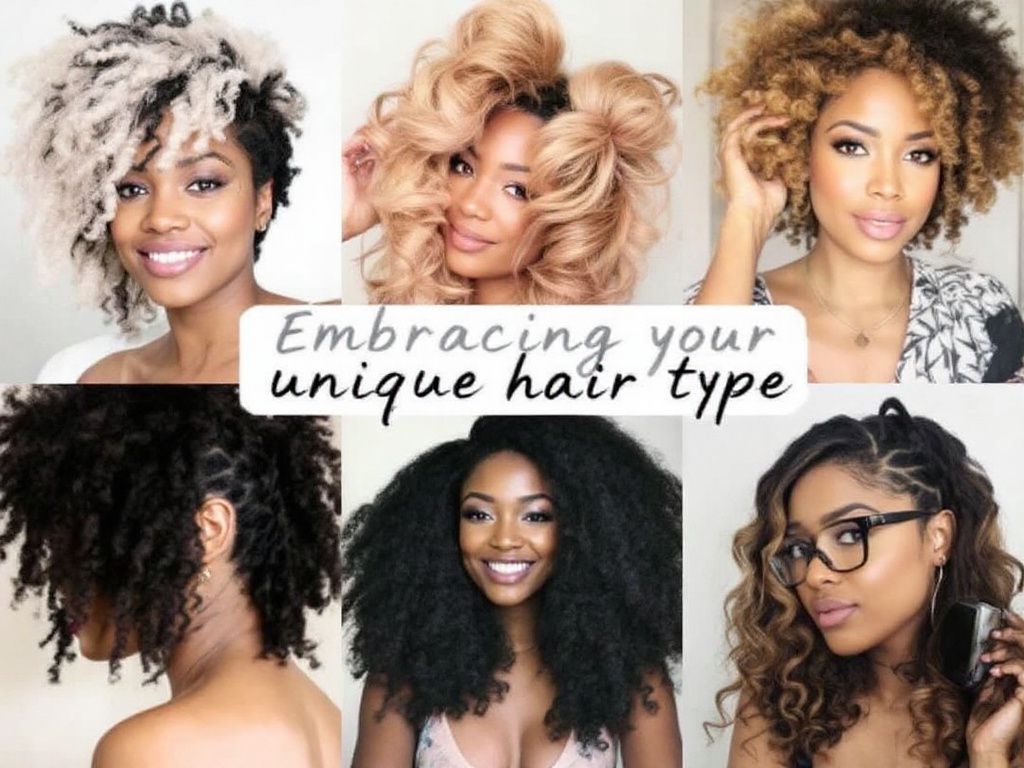
So, let’s dive into the world of hair mysteries—”find hair type” is the quest! You’ve probably had one of those mornings where you wake up, look in the mirror and think, “What exactly is going on with my hair today?” Trust me, you’re not alone. It’s like trying to decipher some ancient riddle that only your hair seems to understand. Why does it like misbehaving some days and look totally fabulous the other days?
The Hair Identity Crisis
First things first, let’s talk about why in the world you’d want to find out your hair type—besides the peace of mind, of course. Knowing your hair type can truly revolutionize the way you care for your mane. You’ll be the hair whisperer of your own story. Whether you’re dealing with a mess of tangled curls or hair that seems plastered flat to your head a few minutes after styling, understanding your hair type can unlock all the juicy secrets to managing those tangles and flatness effectively.
Now, I know what you might be thinking: “Can’t I just use any shampoo and conditioner and call it a day?” Well, you could, but it’s like wearing the wrong size shoe—not quite right and pretty darn uncomfortable in the long run. Different hair types require unique products and care routines to flourish.
The Science Behind Hair Types
Okay, I promise this won’t turn into a high-school science lecture, but understanding what your hair type means does require a quick little sidebar on science. Hair types are generally figured out by considering a couple of factors: curl pattern, porosity, density, width, and length can all play a part. Translating? Yeah, I know, it sounds like we’re talking in some kind of secret code.
Curl Pattern

The curl pattern is probably the most recognized facet of hair typing. You’ve got your straight strands (Type 1) that couldn’t care less about defying gravity. Then there is wavy (Type 2), curly (Type 3), and coily (Type 4) hair, each bringing its own drama and charisma. Each type has subcategories—seriously, it’s like finding your sub-genre in a music streaming app.
Porosity and Why It Matters
Here’s another nugget of wisdom: hair porosity refers to your hair’s ability to absorb and hold moisture. It’s super important because it affects how well oils and moisture pass in and out of the outer layer of your hair, known as the cuticle. Ever wonder why your hair dries out quickly or feels like it’s still wet an eternity after your shower? Blame it on porosity.
To unlock this mystery, try the toss-and-drop water test at home. Grab a strand of your hair and put it in a glass of water. Watch what happens. If it floats at the top, you’ve got low porosity hair, which means tightly bound cuticles. Sinks to the bottom? High porosity it is, likely as a result of bigger gaps in the cuticle layer, often from damage. Somewhere in the middle? You guessed it, normal porosity. Simple enough, right?
Embracing Your Unique Hair Type
Alright, so you’ve figured out your curl pattern and dabbled in porosity. Let’s keep riding this detective train a bit longer. Understanding density and width can further fine-tune your hair care routine, and believe me, it’s kinda fun getting everything just right.
Density Matters, People!
Density is all about how much hair you’ve actually got up there—it’s the overall count. You can check it by staring at your scalp in the mirror (yeah, really). If you see more scalp, you’ve got low hair density; less scalp means you’re in the high-density club. This knowledge? Super vital for styling choices, haircuts, and even coloring.
Hair Width: The Unsung Hero

When we talk about hair width, we’re talking about the diameter of individual strands of hair. I promise this isn’t just salon small talk. Fine hair, medium hair, or thick hair all reacts differently to products and tools. Think about it like flour, red wine, or ketchup—each ingredient plays differently in a recipe.
Tackling the Maze with Trial and Error
Now, let’s circle back: your mission to “find hair type” is a remarkable journey. I will say, it’s not always a clear path. You may find fine lines between what works and what absolutely does not. The trick? Patience, persistence, and perhaps a touch of trial and error.
You might discover that your lovely curls adore humidity, that your fine strands could do without the extra dollop of conditioner, or that lightweight oils make your locks bounce just the right way. It’s as if each strand has its tiny personality, don’t you think?
The Power of Tailored Haircare
With your newfound insider knowledge, you can finally match products, treatments, and pretty much every hair-based decision to your specific type. Seriously, it’s like finally getting the password to a restricted channel you didn’t have access to before. Picture this: shampoos that gently cleanse, conditioners that hydrate the perfect amount, and styling creams that make you feel like the superstar you are.
Opt for sulfate-free shampoos if you have particularly dry or curly hair, and consider experimenting with different oils if high porosity is your struggle-buddy. Heat protectants become your best friend if you find yourself styling often. Invest in a quality diffuser or an ionic blow dryer if curls are your calling—these will save your ends from inevitable heat damage and keep curls looking bouncy.
Embrace Your Uniqueness
When it comes down to it, there’s something wonderfully liberating about fully embracing your mane in its natural glory. Everybody’s hair is uniquely theirs—subtle differences and eccentric tendencies included.

Your Practical Roadmap to Your Hair Type
Alright, final piece of the puzzle. Your roadmap isn’t just full of hypothetical musings or abstract classifications. It requires actual bits of trial and engagement. I’ve summed it up in a handy checklist:
Finding Your Hair Type (Your Personalized Checklist)
- Identify Curl Pattern: Are your strands rebelling into curls or sticking it out straight?
- Check Hair Porosity: Float test your way to understanding our hydration needs.
- Gauge Density: Get close and personal with your scalp—what’s the view from there?
- Assess Hair Width: Feeling fine, medium, or leaning into the thick of it?
- Experiment and Adjust: Here’s your license to try, fail, and try again.
Leave the Conundrum Behind
So, next time someone says, “This shampoo can work for anyone!” You, my friend, will have to smile with the wisdom that it might not always be universal. Now you’re well-equipped to fine-tune an outstanding regimen fit entirely for you.
Remember, finding the right combination or testing what resonates is part of the adventure. Get to know your hair type, understand its love language, and embark on caring for it as if you’re tending to a field of unique, vibrant flowers. Who knows? Today’s hair mysteries could become tomorrow’s source of dazzling mane-you-strations.
Lastly, routine checks and continuous patience will become your hair’s partner in crime for many shampoo bottles to come. Happy unraveling of the hair type saga!
Frequently Asked Questions
What are the benefits of using a hair mask in my hair care routine?
Using a hair mask can provide several benefits, including hydration, smoothing, strengthening, curl definition, heat protection, and damage repair. Hair masks infuse the hair with moisture, help coat the hair shaft to seal split ends, reduce breakage, and protect the hair from heat styling and environmental damage[1][4].
What ingredients should I look for in a hair mask?
Effective hair masks often include ingredients such as coconut oil, argan oil, shea butter, honey, avocado oil, green tea, and coconut water. These ingredients provide nourishment, moisturize, and protect the hair, offering benefits like softening, moisturizing, and protecting against damage[2][5].
How often should I use a hair mask in my routine?
You should use a hair mask whenever your hair feels dry, unmanageable, or in need of intense hydration. This can vary depending on your hair type and needs, but generally, using a hair mask once or twice a week can help maintain healthy and moisturized hair[1][4].
How do I apply a hair mask for the best results?
To apply a hair mask effectively, shampoo your hair first, then apply the mask, focusing especially on the ends where hair tends to be the most damaged. Leave the mask on for anywhere from 10 minutes to overnight, depending on the type of mask and your hair’s needs[1][4].
References


Leave a Reply